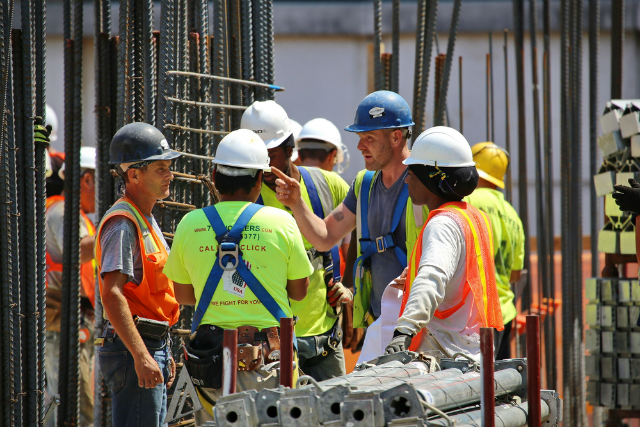Nonfarm payrolls rebound in October – Three takeaways

On Friday, November 3, the US Bureau of Labor Statistics released the monthly payroll figures for the month of October. Although the number of jobs added to the economy rose less than forecast, overall data suggested that the US economy quickly recovered from the September blip due to the hurricanes.
1. Payrolls rise less than expected. Previous two month data revised higher
Payrolls in the US were seen rising 261,000 in the month of October. This was lesser than the forecasts from economists who expected to see a headline print of 313,000.

The previous two month’s combined revision saw an additional 351,000 jobs being added which was positive for the US economy. In September alone, payrolls revised higher to show 18,000 jobs being added compared to the initial print that showed a decline of 33,000.
The revision suggested that the hurricanes did not manage to create a considerable impact that could have slowed down the pace of job gains or economic activity in the region. Job gains were seen rising strongly in the hospitality sector.
On the flip side, digging deeper into the data, civilian employment which is another measure of the jobs created and includes the small businesses showed a decline of 484,000 during the period. However, in the larger context, this comes amid 906,000 jobs that were added in September.
2. US unemployment rate falls to 4.1%
While economists were expecting to see the unemployment rate staying unchanged at 4.2%, the data for October saw the unemployment rate in the United States falling to 4.1%.

However, this decline in the unemployment rate came amid some of the workforce stopped looking for a job. On a yearly basis, the unemployment rate was seen decreasing by 0.7% with the number of unemployed persons decreasing by 1.1 million.
The 4.1% unemployment rate marked the lowest rate since the year 2000, marking a 17-year low. The labor force was however seen to be increasing as data showed an increase of 1.2 million in the past year.
Even the U-6 unemployment rate which accounts for discouraged workers, part-time workers, and part-time workers looking for full-time jobs fell to 7.9%. This marked the lowest U-6 unemployment level since 2006, marking an 11-year low.
3. Wage growth slows to 2.4% annualized
In September, the average hourly earnings were seen rising sharply by 0.5% which beat estimates by a strong margin. However, in October, average wages stayed flat at $26.53 an hour. On a year over year basis, the average wages were seen slowing to 2.4% annualized.
The data for October fell below forecasts as economists polled were expecting to see an average of 0.1% increase on the month.
October payrolls unlikely to change Fed’s plans for a rate hike
The Fed had previously indicated that it expects wages to start picking up soon and suggested that the weakness in the inflation could eventually be addressed by higher wages. Although wages remained weak in October, the data is unlikely to derail the Fed’s plans for a rate hike in December.
With the unemployment rate hitting fresh lows and the US economy continuing to add more jobs the FOMC meeting in December is likely to see another hike in the short-term interest rates. The Fed also signaled three rate hikes in 2018 which is also expected if the current pace continues.
With President Trump nominating FOMC member Jerome Powell as the next Fed Chairman, the markets expect to see Powell continue with the currency monetary policies from his predecessor, Janet Yellen. Thus, the likelihood of a rate hike in December and potentially three rate hikes in 2018 remain on the table for now.




